
Flower chafers are a group of scarab beetles comprising the subfamily Cetoniinae. Many species are diurnal and visit flowers for pollen and nectar, or to browse on the petals. Some species also feed on fruit. The group is also called fruit and flower chafers, flower beetles and flower scarabs. There are around 4,000 species, many of them still undescribed.

The banded martin or banded sand martin is a small passerine bird in the swallow family Hirundinidae that is endemic to Africa. It is the only species placed in the genus Neophedina.

Bittium is a genus of very small sea snails, marine gastropod molluscs in the family Cerithiidae, the horn snails.
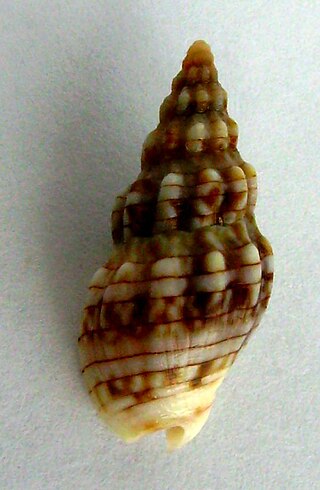
Cominella is a genus of carnivorous sea snails, a marine gastropod mollusc in the family Cominellidae.
Gibbonthophagus is a subgenus of scarab beetles in the genus Onthophagus of the family Scarabaeidae. There are more than 40 described species in Gibbonthophagus. They are found mainly in Asia.
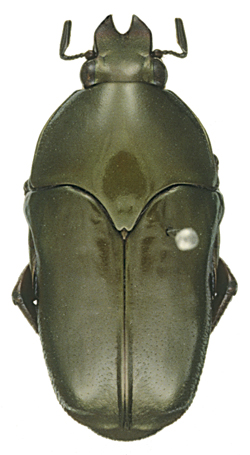
Ischiopsopha are beetles from the subfamily Cetoniinae, tribe Schizorhinini. The genus was created by Raffaello Gestro in 1874. The type species of the genus is Cetonia bifasciata Quoy & Gaimard, 1824. These cetoniids have only the tip of the scutellum visible. The genus is widespread throughout the whole Australian region.

Pachnoda is a genus of beetles from the subfamily Cetoniinae with nearly all of the species living in Africa. The limit of the genus is given by the presence of internal lobes in their aedeagi.
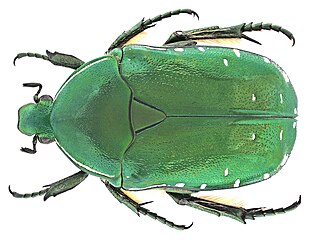
Rhabdotis is a genus of flower chafers in the beetle family Scarabaeidae.
Alissoderus is a genus of beetles in the family Buprestidae, containing the following species:

Lampetis is a genus of beetles in the family Buprestidae, containing the following species:

Philocteanus is a genus of beetles in the family Buprestidae, containing the following species:
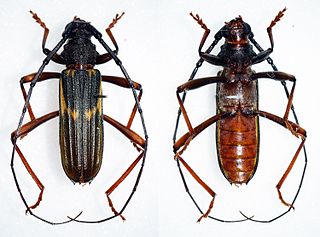
Bothriospilini is a tribe of beetles in the subfamily Cerambycinae, containing 11 genera which have a primarily neotropical distribution. The tribe was proposed in 1950 by Brazilian entomologist Frederico Lane as a member of the new subfamily Bothriospilinae, and with Bothriospila assigned as the type genus. The tribe is morphologically close to the tribe Torneutini, with which it has in common the same shape of the last abdominal segment, which is wide and largely braided in the female, as well as the anterior thigh cavities that are open from behind and the laterally open medial cavity.
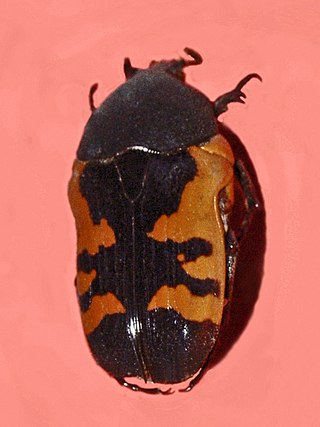
Polybaphes is a genus of fruit and flower chafers belonging to the family Scarabaeidae, subfamily Cetoniinae.

Cetoniini is a tribe of fruit and flower chafers in the family of beetles known as Scarabaeidae. There are over 80 genera in Cetoniini, found worldwide.
Ceratocanthus is a genus of pill scarab beetles in the family Hybosoridae. There are more than 50 described species in Ceratocanthus.
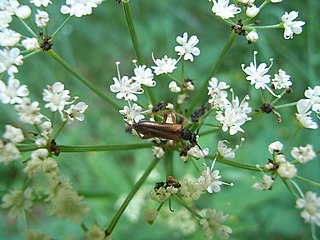
Alosterna is a genus of beetles belonging to the family Cerambycidae.

Paracorymbia is a genus of beetles belonging to the family Cerambycidae.

Phaeochrous emarginatus, is a species of scavenger scarab beetle found in India, Sri Lanka, Bhutan, China, Taiwan, Japan, Laos, Myanmar, Thailand, Malaysia, Vietnam, Indonesia, Philippines, New Guinea, Ryukyu Archipelago, and Australia.

Dischista rufa is a beetle in the genus Dischista, belonging to the family Scarabaeidae. It is found in South Africa.
















